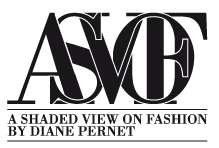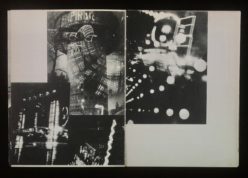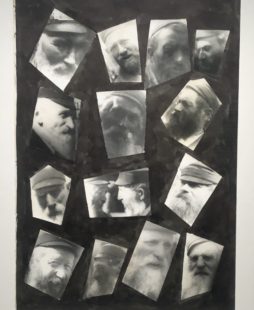Dear Shaded Viewers,
Upon entering the fourth floor galleries of the Pompidou, in the first space to the right there is a retrospective of the Bauhaus taught, Israeli photographer and artist, Moï Ver. The exhibition begins with his early photography of the Jewish community in Vilnius, Lithuania in the 1920s. It occurs to me that I haven’t seen many photos of Jewish communities pre-WWII, and I imagine that part of the tragedy (if that is a strong enough word) of the Holocaust, is that perhaps, the quite literal artistry of Jewish art is overshadowed with the context of genocide, as if the work exists only as documentation of a culture that so much of was destroyed. But that isn’t really the narrative of Moï Ver’s work. As Bauhaus attempts to create modernity through unifying artistic processes with a focus on functionality, Moï Ver’s work seems less documentational and much more…fun?
In contrast to photos of young boys in dusty clothes sitting on the steps of a discreet synagogue, there are crafty collages of long orthodox beards cut out and playfully arranged, which look to me like a poster that could be on the wall of a barber-shop in Brooklyn, or maybe a page out of zine by a hipster kid in Hebrew School, if that sort of thing even exists.
Walking through the rooms I look to the walls for biographical text on his life during the war and think this story will take a sad turn and probably a pause, but I am met instead with pictures taken during his studies in Paris; romantic, black and white images, with double, quadruple, quintuple vision of the city lit up at night, which is an effect created by layering photo plates on top of one another that create repeating shapes and texture, almost textile-like, in true Bauhaus fashion. He was celebrated as a major pioneer of the avant-garde. The exhibition follows Moï Ver’s life from Vilnius to Dessau, through Eastern Europe and Paris, eventually settling in Mandatory Palestine in 1932. With Bauhaus flair, he continued to work as a major contributor to Israeli arts and culture, producing Zionist propaganda, and eventually turning to brightly colored abstract painting until his death in 1995.
Just then my friend shows up wearing a long, structured black coat that I compliment her on and she tells me that she got it at a Hasidic clothing stock store in New York. I say she is very on-theme. She laughs, we joke and wonder if maybe it’s a little inappropriate.
Continuing through the galleries, there is the double exhibition of photographers Lynne Cohen and Marina Gadonneix. Both Cohen and Godonneix’s photography are focused on images uninhabited by life, revealing the permanence of space, through an eye that maintains the same visual themes of Bauhaus; repetitive, architectural, geometrical, modern.
Although void of figures, the images retain the coldness of an impression of life which remind me, (returning to my thoughts in the previous exhibition) of the earliest photos of Jewish people that I can recall viewing, which are those of freed concentration camps, and of a tour that I went on of the Natzweiler-Struthof camp in France. Walking through the grounds of the camp and through the empty rooms where prisoners were held, worked, subjected to medical experiments, and cremated, these empty spaces held such strong impressions of the lives that once filled them. Yet there remains a strange and cold, uncanny-valley sort of feeling that those kinds of unimaginable places bring. I feel whispers of that sentiment looking at Cohen’s photos of abandoned laboratories and psychologist’s offices. And again while viewing Gadonneix’s collection of shadowy, black and white images taken of gallery spaces which are empty apart from crates, backdrops and mounts, inspired by images of the Louvre emptied and evacuated during the First World War.
Afterwards, the fifth floor balcony of the Pompidou is open, serving refreshments for those attending the vernissage. My friend asks if the balcony is usually open to the public and I’m not positive that it is. Suddenly, inhabiting that inaccessible space feels a little more profound than it would have before.
Rianna Murray
The exhibitions of Moï Ver, and Lynne Cohen/ Marina Gadonneix are on view from April 11- August 28th at the Centre Georges Pompidou in Paris, France.
The exhibitions of Moï Ver, and Lynne Cohen/ Marina Gadonneix are on view from April 11- August 28th at the Centre Georges Pompidou in Paris, France.











